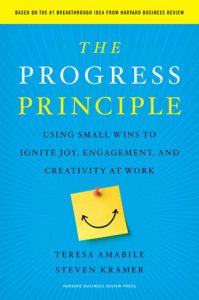Narrative Analysis: What’s in a Story? September 10, 2021 - Blogs on Text Analytics

What is Narrative Analysis?
Narratives can come from almost anything; interviews, books, blogs, journals, diaries, autobiographies, podcasts, videos, audio recordings, anywhere someone is telling a story. Narrative analysis is the technique of using those narratives to address a research question, to examine business issues, to understand or develop public policy, etc.[1] It is a form of qualitative, mixed methods research where the story is the data.
What are the different models of narrative analysis?
Narrative analysis can take many forms or approaches including what is the content of the story, how the story is structured, what functions it serves, linguistics, context, or what is the thread weaving its way through different narratives. One can also combine different types of narratives in an analysis such as a literature review and interviews. One typically looks at narratives to discover key themes and ideas and then describes these narratives in more detail and shows how they impact policy and decision-making. The source material often includes large amounts of text documents to organize and analyze. As a result, researchers frequently employ qualitative coding techniques in their analysis. This involves both manual and computer assistance using qualitative coding software such as QDA Miner.
There are many ways to approach narrative analysis. In this Blog, we cannot do justice to them all. To give you a better understanding and to illustrate some of the practical applications of narrative analysis, we will look at two examples of narrative analysis exploring very different subject matter. Amabile & Kramer (2011) look at the narratives created by diary entries. Patrick, Schoeneborn, & Wickert (2012) explore the narratives that contribute to the standardization of corporate responsibility. These papers use different types of source material and take different approaches in their narrative analysis.
Some examples of narrative analysis.
In their book “The Progress Principle”, Ambile & Kramer (2011) are looking to find out what motivates workers to be creative, to progress at work every day. They also look at how managers can leverage this progress, providing them with action items or a check list to create a positive work environment. The hypothesis is that regular small wins can make workers feel good about themselves and encourages them to find solutions to problems and move forward. On the opposite, small losses can have a decidedly negative impact. The authors are searching for common criteria management can use to foster a positive work environment.
To gather data, the authors engaged 26 project teams from seven companies. This involved 238 individuals and produced almost 12,000 diary entries based on experience at work. The diary entries were coded using QDA Miner qualitative analysis software to find narratives that could help discover what motivated good work. The narratives in the diaries established that, obviously, big successes in the workplace contributed to positive feelings of well-being but these happen rarely. What is most important here is that small wins also play a very important role. People feel good about themselves and their work. Equally important is that small wins are much more easily attained and can happen more frequently leading to a positive feeling among employees and a more productive work environment.
In Patrick, Schoeneborn, & Wickert (2012), through narrative analysis, the authors study the standardization of corporate responsibility by combining two sources, interviews and public documents.
In order to identify the type and evolution of narratives in CR standardization, we pursued a two-tiered analysis. First, we aggregated prevalent narrative patterns that we detected in a series of interviews. Drawing on the interview findings, we then quantitatively identified narratives and “surface stories” in public documents. Second, we tracked the lifecycle of identified narrative patterns. This allowed us to build a longitudinal description of narratives, i.e., to elucidate “narrative dynamics.”
Interviews were conducted face-to-face and over the telephone with different businesses and experts. After a lengthy human and computer-assisted coding process using QDA Miner (details of which are explained in the paper) the authors consolidated the codes into a set of “surface stories” such as walk-the-walk, talk-the-talk, greenwash, promise-to-act, adoption, business case, outreach. These were coalesced into three main narratives: success narrative, failure narrative, and commitment narrative.
Among other things, the paper poses that the narrative surrounding standardization of corporate responsibility is dependent and influenced by many voices including industry experts and observers.
These papers are just two examples of narrative analysis. The technique can be applied to almost any discipline: history, political science, marketing, consumer behavior, anthropology, sociology, health care, education, communication, etc. Or in other words, wherever there is a story to tell.
References
Amabile, T., & Kramer, S. (2011). The progress principle: Using small wins to ignite joy, engagement, and creativity at work. Harvard Business Press.
Patrick, H., Schoeneborn, D., Wickert, C. (2012) Talking the Talk, Moral Entrapment, Creeping Commitment? Exploring Narrative Dynamics in Corporate Responsibility Standardization
Other Papers Using QDA Miner in Narrative analysis
Ali, N., Waters, V., & Erdman, K. (2015). A qualitative analysis of physician assistant students’ mental health bias and stigma constructs before and after a psychiatry rotation. Journal of the American Academy of PAs, 28(10), 1.
Elisondo, R. C., & Vargas, A. C. V. (2019). Women’s everyday creative activities: A qualitative study.
García, M. L. S., & Cano, E. V. (2014). Analysis of the didactic use of tablets in the European Higher Education Area. International Journal of Educational Technology in Higher Education, 11(3), 63–77.
Haile, K., Umer, H., Fanta, T., Birhanu, A., Fejo, E., Tilahun, Y., & Damene, W. (2020). Pathways through homelessness among women in Addis Ababa, Ethiopia: A qualitative study. Plos one, 15(9), e0238571.
Mathias, B. D., & Smith, A. D. (2016). Autobiographies in organizational research: using leaders’ life stories in a triangulated research design. Organizational Research Methods, 19(2), 204–230.
Yang, K. C., & Kang, Y. (2020). What Can College Teachers Learn From Students’ Experiential Narratives in Hybrid Courses? : A Text Mining Method of Longitudinal Data. In Theoretical and Practical Approaches to Innovation in Higher Education (pp. 91–112). IGI Global.
Yee, H. H., Fong, B. Y., Ng, T. K., & Chow, B. S. (2020). Community ageing with health and dignity through a service-learning initiative. Asia Pacific Journal of Health Management, 15(2), 11–17.

